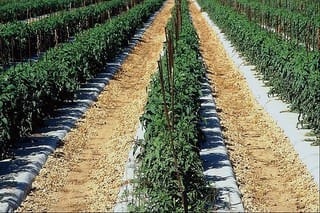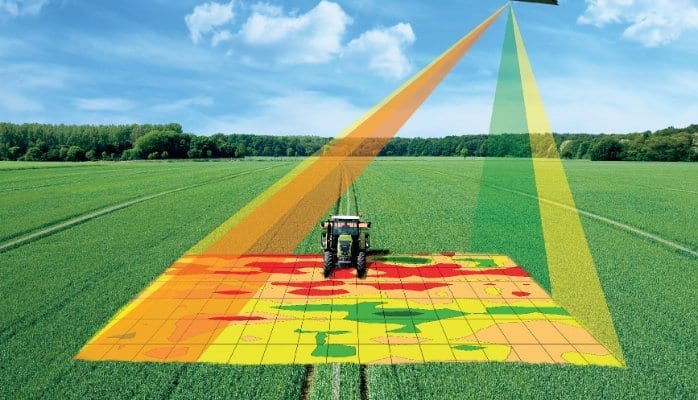
Is biodiverse agriculture an anachronism? Or is it a vital part of a food-secure future?
Given the need to feed an estimated 2.4 billion more people by the year 2050, the drive toward large-scale, single-crop farming around the world may seem inexorable.
But there’s an important downside to this trend, argues Timothy Johns, Professor of Human Nutrition at McGill University in Montreal, in a paper presented Feb. 15 at the annual meeting of the American Association for the Advancement of Science in Chicago.
Diets for most people around the world are becoming increasingly limited in biological and nutritional diversity. “Large-scale agriculture is characteristically simplified and less diverse than small-holder agriculture,” Prof. Johns cautions. “This is true in genetic, ecological and nutritional terms.”
Small farmers, by contrast, in many places continue to grow a range of species and multiple varieties that form the basis of their diet and nutrition. Use of a range of wild species of fruit, vegetables, condiments and medicines, as well as wild animal-sourced foods, increase the likelihood that subsistence farmers with access to natural ecosystems meet their nutrition and health needs.
The problem is that smallholder farmers in developing countries often have low productivity and little likelihood of generating the profits needed to rise above poverty level, says Prof. Johns, who directs the McGill Canadian Field Studies in Africa program. In particular, the smallholder farms in sub-Saharan Africa, which account for more than 90% of agricultural production and the primary livelihood of 65% of the population, need to be more productive.
When they have access to improved technology, however, smallholder farmers can be both more productive and more sustainable than large-scale, intensive agriculture. Using family members in farming reduces labor and supervision costs, while a more intimate knowledge of the local soil, plants and animals enables smallholders to maximize output. In Brazil, for example, national data from the Censo Agropecuário shows that “family farms” produce 38% of national agricultural value from 24% of the agricultural land. An assessment of 286 projects in 57 countries, moreover, shows that low-cost, sustainable and diversity-enhancing technologies increased average crop yields on small farms by 79% since the early 1990s.
Recognizing the value of particular elements of agrobiodiversity with exceptional nutritional and health properties can provide opportunities where smallholder farmers have economic advantages, Prof. Johns argues. Access to such products offers potentially profound public health benefits, he adds. “Products of biodiversity within culturally-based diets provide essential micronutrients and lower prevalence of diet-related chronic disease.”
Carbohydrates – mainly cereals, sugars, potatoes and other tubers – and vegetable oils produced efficiently by large-scale agriculture and distributed through global trade are more affordable for many people than lower-calorie, more nutritious foods. In many cases, the result is a form of malnutrition defined by overconsumption of calories. This has helped fuel a growing global epidemic of obesity and chronic diseases such as diabetes and cardiovascular disease.
Meanwhile, some 2 billion people suffer from deficiencies in micronutrients, most importantly iron, vitamin A, iodine and zinc. This typically results from not eating enough foods rich in essential vitamins and minerals, such as animal-source foods, fruits, vegetables and legumes.
The Latest on: Biodiverse agriculture
[google_news title=”” keyword=”Biodiverse agriculture” num_posts=”10″ blurb_length=”0″ show_thumb=”left”]
via Google News
The Latest on: Biodiverse agriculture
- Florida will invests billions to prevent potential biodiversity crisison April 30, 2024 at 2:01 am
A potential crisis in Florida should ease after state lawmakers this month allocated $2.25 billion to improve water quality and restore the state's imperiled biodiversity.
- What is regenerative agriculture? Farmers, experts share the keys to biodiversityon April 23, 2024 at 5:52 pm
which together creates a biodiverse environment that enriches and renews the land for generations to come. Culinary and agriculture power couple Matthew and Tia Raiford, along with Matthew's ...
- Beyond The Plate: west~bourne’s Shift From Restaurant To Regenerative Manufactureron April 22, 2024 at 5:00 am
Science shows that regenerative agriculture is the only system that can pull down ... Avocado oil emerged as a game-changer in my journey towards a biodiverse, climate-conscious, and healthy pantry.
- More sustainability in global agricultural tradeon April 17, 2024 at 5:00 pm
The EU wants to ensure greater sustainability in agricultural trade with the Global South -- with the aim of minimizing the environmental and climate-damaging effects of importing crops such as ...
- Report links H&M and Zara to major environmental damage in biodiverse Cerradoon April 17, 2024 at 3:26 pm
Clothing giants H&M and Zara have been linked to large-scale illegal deforestation, land-grabbing, violence and corruption in the Brazilian Cerrado, according to an investigation by Earthsight. Using ...
- In southern Tanzania, conservation strengthens community resilience while uplifting womenon April 17, 2024 at 11:36 am
The CARE-WWF Nachingwea project addressed the intersection of environmental, climate, and socioeconomic challenges.
- Comment: How to boost Brazil’s agriculture sector and protect the Cerradoon April 15, 2024 at 7:29 am
As Brazil takes on the presidency of the G20 and calls for the massive channelling of resources to address challenges posed by climate change, it has a unique opportunity to tackle complex global ...
- 20 Countries With the Highest Agricultural Population Densityon April 7, 2024 at 12:02 am
In this article, we will take a look at the 20 countries with the highest agricultural population density. If you would like to skip our discussion on the trends in the agriculture sector ...
- Food and Agriculture Newson March 26, 2024 at 5:00 pm
Mar. 25, 2024 — While Hollywood and Silicon Valley love the limelight, California is an agricultural powerhouse, too. Agricultural products sold in the Golden State totaled $59 billion in 2022.
- Sustainable Agricultureon March 6, 2024 at 10:48 am
Food production in the United States is at a crossroads. For decades, the public policies and big corporations that shape our food and agricultural system have pressed farmers to manage their land ...
via Bing News










